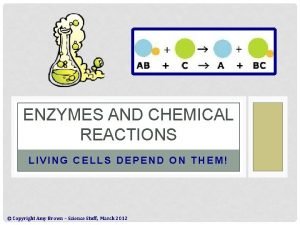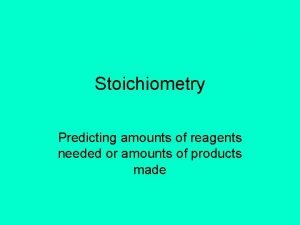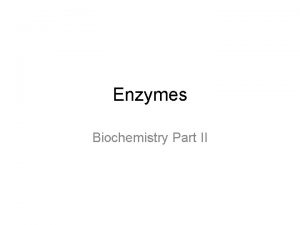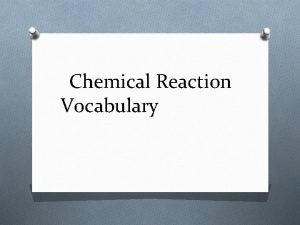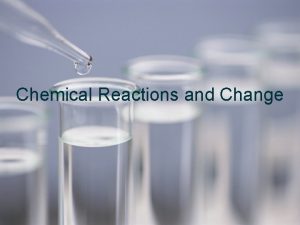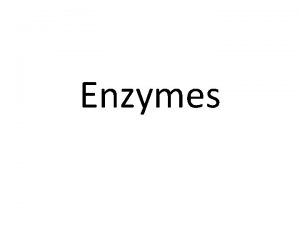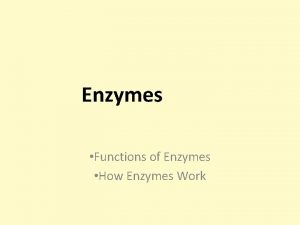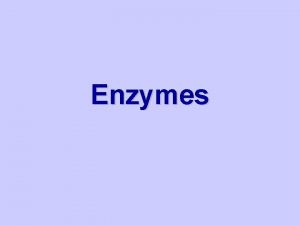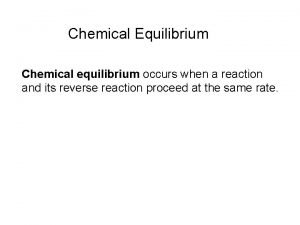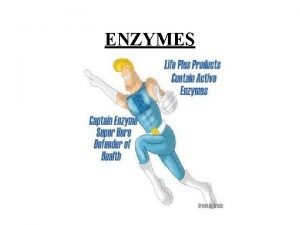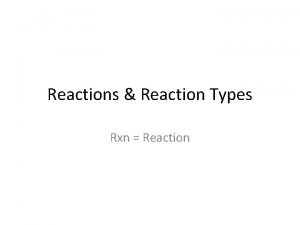Enzymes Enzymes Each chemical reaction that occurs in













- Slides: 13

Enzymes

Enzymes • Each chemical reaction that occurs in a living thing is controlled by an enzyme • Ends in –ase (lactase, amylase) • Enzymes speed up chemical reactions that take place in cells • Catalyst is something that speeds up or slows down chemical reaction – Reduces the amount of energy need to start that reaction

Vocabulary • Substrate-reactants of an enzymecatalyzed reaction • Catalyst-substance that speeds up the rate of a chemical reaction • Activation energy –energy needed to get reaction started • Product-substance you end up with at the end of a chemical reaction

Effects of Enzymes

What Happens? ? ? • Catalysts are not permanently changed or used up by the reaction

Locks and Keys • Just like a door with a lock and key, enzymes work the same way – Enzymes complete very specific jobs and do nothing else – Enzymes are very specific “locks” and the compounds they work with are the special “keys”

4 steps of how an enzyme works 1. An enzyme and substrate are in the same area. The substrate is the biological molecule that the enzyme will work on.

2. The enzyme grabs onto the substrate with a special area called the active site. The active site is a specially shaped area of the enzyme that fits around the substrate. The active site is the keyhole of the lock.

3. A process called catalysis happens. Catalysis is when the substrate is changed (broken down or combined with another molecule to make something new)

4. The enzyme lets go. When the enzyme lets go, it returns to normal, ready to do another reaction. Substrate is no longer the same. The substrate is now called the product.

Can You Stop Them? • Good Question! If an enzyme just kept going and converted every molecule in the world …. ack…. it would never stop…. like a monster! We need to control enzymes HOW? ? ?

Affects Enzyme Activity 1. Temperature proteins change shape as temps change -enzyme’s activity depends on it’s shape it, temp changes can mess up the process and enzymes won’t work

2. p. H Levels acidity also changes the shapes of proteins 3. Activators make enzymes work harder and faster 4. Inhibitors opposite of activators, inhibitors either slow down or stop enzyme activity ex: snake venom or nerve gas
 Difference between nuclear reaction and chemical reaction
Difference between nuclear reaction and chemical reaction Phân độ lown ngoại tâm thu
Phân độ lown ngoại tâm thu Block xoang nhĩ độ 2
Block xoang nhĩ độ 2 Thể thơ truyền thống
Thể thơ truyền thống Thơ thất ngôn tứ tuyệt đường luật
Thơ thất ngôn tứ tuyệt đường luật Walmart thất bại ở nhật
Walmart thất bại ở nhật Tìm độ lớn thật của tam giác abc
Tìm độ lớn thật của tam giác abc Con hãy đưa tay khi thấy người vấp ngã
Con hãy đưa tay khi thấy người vấp ngã Tôn thất thuyết là ai
Tôn thất thuyết là ai Gây tê cơ vuông thắt lưng
Gây tê cơ vuông thắt lưng Sau thất bại ở hồ điển triệt
Sau thất bại ở hồ điển triệt Menzyme
Menzyme How to determine if a single replacement reaction occurs
How to determine if a single replacement reaction occurs What is the role of enzymes in chemical reactions
What is the role of enzymes in chemical reactions











